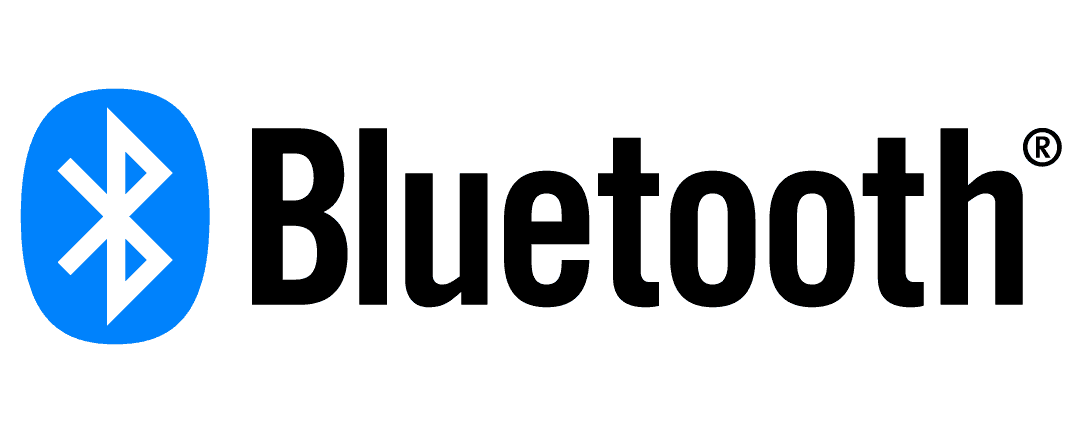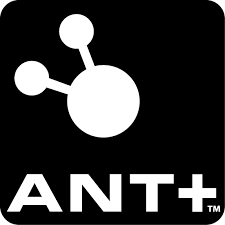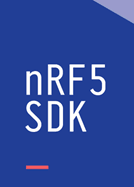nRF52 Series
The nRF52 Series System-on-Chips (SoCs) are a family of ultra-low-power wireless SoCs from Nordic Semiconductor.

nRF52 Series offers a broad selection for any product requiring the following connectivity.
- Bluetooth® Low Energy
- Bluetooth mesh
- Thread or Zigbee connectivity.
All family members are advanced and energy-efficient but have different feature sets and memory configurations. The nRF52 family has 64 MHz Arm Cortex-M4 CPU, with a floating-point unit (FPU) and an instruction cache on the higher-end SoCs.
For specification and comparison in the nRF52 family, refer to “Nordic Semiconductor Infocenter: nRF52 Series”
nRF52 Applications
The nRF52 Series is designed to enable a wide range of wireless embedded systems and consumer electronic products and applications like
- Advance Wearable
- Connected Home
- Professional Lighting
- Asset Tracking
- HVAC
- Metering
- Smart Lock
- Mesh Networks
- Personal Fitness and health monitoring devices
- Remote controls, etc.
Wireless Technologies in brief.
Before going further, let us understand wireless technologies.
Bluetooth® Low Energy

It is efficient, low-cost, and interoperable wireless connectivity for compact battery operable applications.
Compared to Classic Bluetooth, Bluetooth Low Energy is intended to provide considerably reduced power consumption and cost while maintaining a similar communication range. It is a wireless protocol operating in the 2.4 GHz ISM band, with up to 1.4 Mbps application throughput or up to 1,000 m range. The technology is highly efficient, minimizing the energy needed to transfer data. It is secure, specifying features to ensure confidentiality, integrity, and privacy.
Bluetooth LE is now standardized in all smartphones, tablets, and laptops, in addition, a wide range of other devices. It has support in iOS and Android, as well as macOS, Windows 10, and Linux.
Bluetooth5
Bluetooth 5 is the most important improvement of the Bluetooth standard since the introduction of Bluetooth LE in Bluetooth 4.0. The new features significantly enhance all applications and give life to applications that just were not feasible before.
There are four significant new features of Bluetooth 5:
- A higher bit rate of 2 Mbps.
- A long-range mode with better sensitivity at two new lower bit rates of 500 kbps and 125 kbps.
- An 8x improvement in broadcast capability with advertising extensions.
- An improved channel selection algorithm (CSA #2) which enables improved channel coordination and coexistence efficiency with other Bluetooth and non-Bluetooth traffic.
Bluetooth Mesh
Bluetooth mesh is a state-of-the-art standard based on Bluetooth Low Energy that allows for many-to-many communication with thousands of devices.
The functionality is a vital update for new applications in lighting, sensor networking, predictive maintenance, asset tracking, and positioning. Bluetooth mesh is a managed flooding mesh. It is a simple and reliable approach to distribute messages in a larger network. Reliability is ensured with multiple paths from source to destination and there is no single point of failure. Security permeates the technology, network and application security are completely separated, and protection against attacks is built in.
Thread
(IPv6-based mesh networking for the smart home and building automation)
.png)
Thread is a standards-based IPv6-based mesh networking protocol developed for simply and securely connecting products around the home to each other, to the internet, and to the cloud. Thread networks are simple to install, highly secure, scalable to hundreds of devices. Thread is developed to run on low-power IEEE 802.15.4 devices.
(Read more: Nordic Semiconductor)
Zigbee

Zigbee is a communication protocol used to create a personal area network with small, low-power communication such as home automation, building monitoring, and other low power, low bandwidth needs. Zigbee is a low-power, low data rate, and close proximity (i.e., personal area) wireless ad hoc network.
Its low power consumption limits transmission distances to 10–100 meters line-of-sight, depending on power output and environmental characteristics. Zigbee devices can transmit data over long distances by passing data through a mesh network of intermediate devices to reach more distant ones. Zigbee is typically used in low data rate applications (250Kb/s) that require long battery life and secure networking.
ANT

ANT is a popular proprietary ultra-low-power wireless solution operating in the 2.4GHz ISM band that is especially suited for battery-operated products. Its outstanding power efficiency has seen it become a popular choice for wireless applications in the fields of sports and fitness, and health and wellness.
(Read more: Nordic Semiconductor)
nRF52 Series SoCs Features
Wireless Protocols and features
The nRF52 Series SoCs support an extensive range of wireless protocols, offer excellent RX sensitivity and TX power up to 8 dBm.
- All SoCs support Bluetooth Low Energy and are capable of high-throughput 2 Mbps in addition to features introduced in Bluetooth 5.2.
- A selection of the devices also supports Bluetooth features such as Direction Finding and Long Range.
- Mesh protocols like Bluetooth mesh, Thread, and Zigbee are supported, and can on the higher-end devices run concurrently with Bluetooth Low Energy. This enables smartphones to provision, commission, configure and control mesh nodes.
- NFC is available to wake up the devices from sleep or to securely pair out-of-band (OOB).
Other Features
- All family members are advanced and energy-efficient but have different feature sets and memory configurations. The nRF52 family has 64 MHz Arm Cortex-M4 CPU, with a floating-point unit (FPU) and an instruction cache on the higher-end SoCs.
- Digital interfaces such as UART, SPI, and TWI are supported by all SoCs,
- The more advanced SoCs also support digital interfaces such as high-speed SPI, QSPI, PWM, USB, PDM, and I²S.
- Most SoCs support 12-bit ADC and one or two analog comparators.
- Operate at temperatures as low as -40°C and as high as 85°C. nRF52820 and nRF52833 extend up to 105°C.
- Supplied with a voltage between 1.7-3.6 V, and a selection extends up to 5.5 V, enabling supply from sources such as rechargeable batteries or USB.
- Flash memory range from 192 KB to 1024 KB while RAM range from 24 KB to 256 KB
Flash Based Flexibility and Upgradability
The nRF52 Series are all-flash-based SoCs. Flash memory brings complete flexibility and upgradability to designs and products. Devices can be re-programmed in the factory or in the field with over-the-air device firmware upgrades (OTA DFU). This enables product updates and feature additions anytime, anywhere.
nRF52 Series Development Tools
nRF52 Series is supported by two main software development Kits (SDKs)
- nRF5 SDK
- nRF Connect SDK
nRF5 SDK

The nRF5 SDK is a mature solution for developing Bluetooth Low Energy products and is in use in hundreds of millions of products in the market today. nRF5 SDK also has dedicated versions for Bluetooth mesh (nRF5 SDK for Mesh) and for Thread and Zigbee (nRF5 SDK for Thread and Zigbee). All nRF5 SDKs are complete and contain everything needed to develop nRF52 Series-based products with Bluetooth Low Energy, Bluetooth mesh, Thread, and/or Zigbee connectivity.
nRF Connect SDK

The nRF Connect SDK represents a new, open-source, and scalable long-term evolution for development on all of Nordic's short-range and cellular IoT devices. This SDK is comprised of open-source elements from external projects and code developed by Nordic. It incorporates a scalable and low-power Zephyr real-time operating system (RTOS) and is designed for the development of applications across all Nordic's wireless devices. The nRF Connect SDK represents the future direction for a single software platform for any design using wireless connectivity; from the resource-constrained to the ever more complex high-end solutions.
nRF52 Development Kits
- nRF52 DK (for nRF52805, nRF52810, and nRF52832 SoCs.)
- nRF52833 DK (for the nRF52820 and nRF52833 SoCs)
- nRF52840 DK (for nRF52811 and nRF52840 SoCs)
All development kits are available for purchase.
Next section, we will see how to start development on the nRF52 Series.
Reference
Components Used |
||
|---|---|---|
| nRF52805 nRF52805-CAAA-R7 |
X 1 | |
| NRF52833 NRF52833-QIAA-R |
X 1 | |
| NRF52810 NRF52810-QFAA-R |
X 1 | |
| nRF52811 nRF52811-QCAA-R |
X 1 | |
| nRF52820 nRF52820-QDAA-R7 |
X 1 | |
| nRF52832 nRF52832-QFAB-R |
X 1 | |
| nRF52840-DK nRF52840-DK |
X 1 | |